
Author: UkuriaOC, CryptoVizArt, Glassnode; Compilation: Tao Zhu, Bitchain Vision
summary:
-
Despite the confusing price movement, investors’ profitability remains strong, with an average unrealized profit of about 120% per token.
-
The demand side is enough to absorb seller pressure and HODLer divestment, but not enough to promote further upward growth.
-
Spot and arbitrage trading continues, especially the increase in institutional traders, which temporarily strengthens expectations for range trading.
Market profitability remains strong
Horizontal price fluctuations tend to be manifested as investors’ boredom and indifference, which seems to be the dominant reaction of all Bitcoin markets.The BTC price is consolidating within a mature trading range.Investors remain in a generally favorable position, with more than 87% of the circulating supply being profitable, with a cost base below spot prices.

Using the MVRV indicator, we can evaluate the scale of unrealized profits held by ordinary investors.
Currently, the unrealized profits held by ordinary tokens are approximately +120%, which is typical of the previous market trading near ATH in the previous cycle.The MVRV ratio remains above its annual baseline, indicating that the macro uptrend remains unchanged.
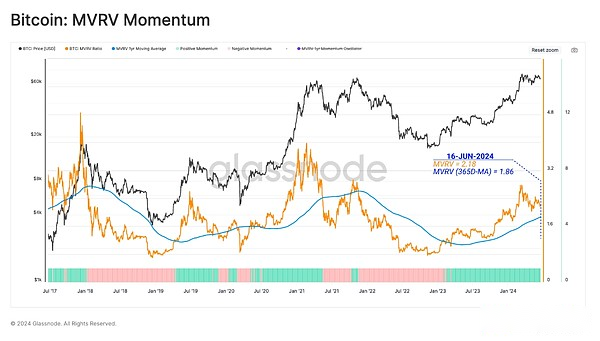
We can use the MVRV ratio to define pricing ranges to assess the extreme deviations in investor profitability relative to the long-term average.Historically, a breakthrough of 1 standard deviation is consistent with the long-term macro top.
Currently, BTC prices are stabilizing and consolidating within the range of 0.5 to 1 standard deviation.This once again highlights that despite recent market conditions, average investors still hold statistically high profits.
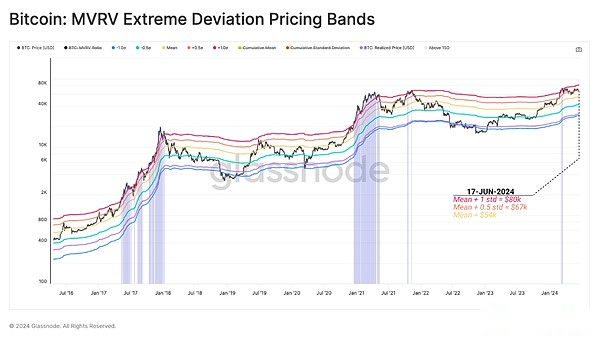
When the market decisively broke through the 2021 ATH, a large number of investor allocations appeared, driven mainly by the long-term group of holders.This reflects a substantial profit, which helps increase active trading and liquidity supply.
Typically, after a new ATH, the market needs plenty of time to integrate and digest the introduced oversupply.As the balance is established, this leads to a decrease in realized profits and seller pressure.
Reduced seller pressure and profit-taking will naturally reduce market resistance.despite this,BTC prices have been unable to maintain a significant upward momentum since March ATH.This shows that while the demand side is stable enough to maintain market range volatility, ultimate growth is not enough to re-establish the upward momentum.

Trading volume is sluggish
Although investors have good profitability,After hitting record highs, the volume of transactions processed and transferred on the Bitcoin network has dropped sharply.This highlights the weakening of speculative desire and the intensification of market hesitation.
 Similar situations can also be observed when evaluating spot trading volumes on major centralized exchanges.This shows that there is a strong correlation between the on-chain network settlement volume and transaction volume, reflecting investors’ boredom.
Similar situations can also be observed when evaluating spot trading volumes on major centralized exchanges.This shows that there is a strong correlation between the on-chain network settlement volume and transaction volume, reflecting investors’ boredom.
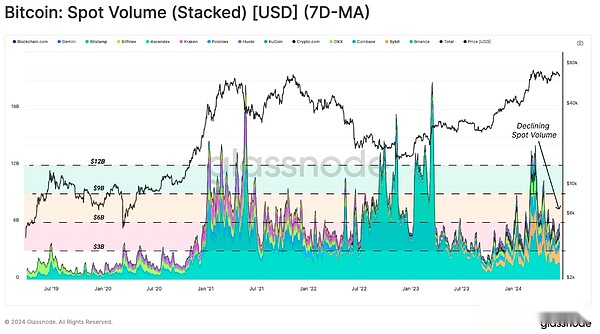
Exchange activity dropped sharply
Going deeper, we can check the on-chain inflows on exchanges denominated in BTC, and we again noticed a significant reduction in activity.
Currently, short-term holders send approximately 17,400 BTC to the exchange every day.However, this is significantly lower than the peak of 55,000 BTC/day recorded when the market reached a high of $73,000 in March, when speculation levels became too high.In contrast, long-term holders flow into exchanges are relatively low, with only a trivial inflow of 1000+ BTC per day.

We can visually see a sharp decline in LTH investor activity through the percentage of long-term holder balances sent to the exchange.
LTH sends less than 0.006% of its total holdings to the exchange, indicating that the group has reached a balance and requires higher or lower prices to stimulate further action.
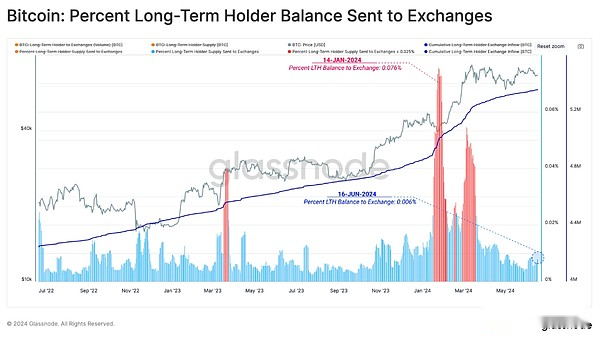
Currently, the token transfers that make profits (11,000 BTC) are more than the token transfers that make loss (8,200 BTC).This suggests that despite the relatively small magnitude, there is a tendency to be profit-dominated overall.
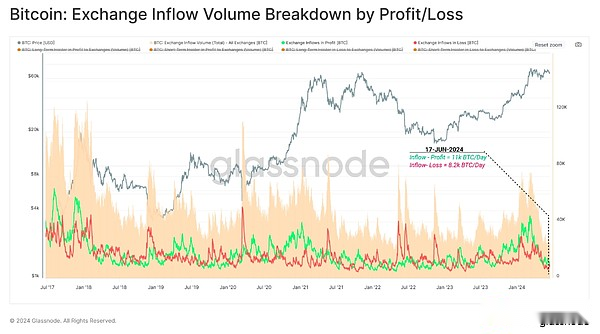
Currently, the average tokens sent to the exchange realize a profit of approximately $55,000 and a loss of -735, respectively.This makes the average profit 7.5 times higher than the loss, with only 14.5% trading days recording a higher ratio.
This meansHODLers is still defunding, demand is enough to absorb seller pressure, but not enough to push up market prices.This suggests that the market structure is more beneficial to range traders and arbitrage strategies than directional and trend trading strategies.

Cash and arbitrage basic transactions
Another tool that allows us to describe the spot market is the spot cumulative volume increment (CVD).This indicator describes the net deviation between the buy volume and sell volume of the market recipient, in US dollars.
Currently, net seller bias dominates the spot market, but the market continues to be on the sideways.This is consistent with the above view, that is, the demand side is roughly equivalent to the seller’s pressure, keeping the market fluctuating in range.
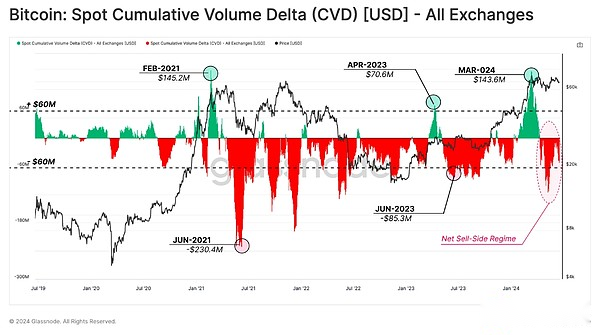
When evaluating the futures market, we noticed that open interest contracts continue to rise, currently exceeding $30 billion, slightly below the previous highest level.However, as highlighted in WoC-23, a large portion of this open contract is associated with market neutral spot and arbitrage trading.
In markets with range volatile, the increase in open contracts may mean an increase in volatility capture strategies, as traders can get premiums from perpetual swaps, futures and options markets.
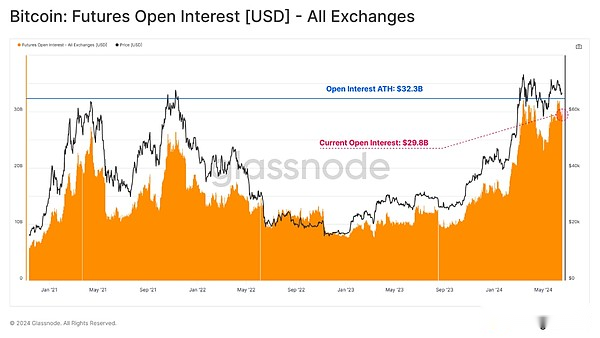
The sharp increase in unclosed contracts on the Chicago Mercantile Exchange highlights the increasing participation of institutional investors.The Chicago Mercantile Exchange currently holds more than $10 billion in open contracts, accounting for nearly one-third of global market share.
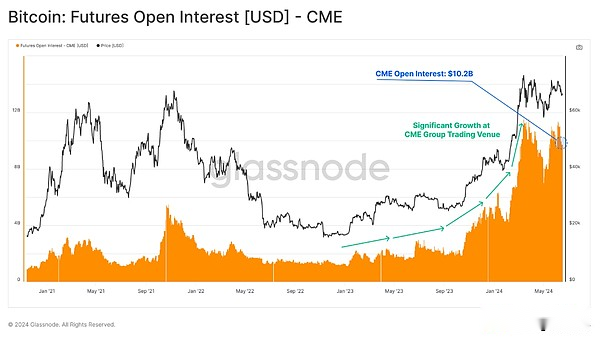
In sharp contrast to the increase in open positions,Futures trading volumes showed a similar decline in the same way as spot markets and on-chain transfers.This suggests that speculative interest is relatively low, while fixed basis trading and arbitrage positions dominate.
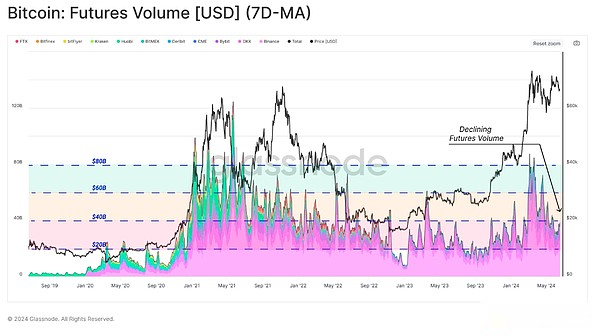
Summarize
Despite the volatile market,Ordinary Bitcoin investors still remain basically profitable.However, investors’ decisiveness has declined, and the trading volume in spot, derivatives markets and on-chain settlements has all shrunk.
Demand and sellers seem to have established a balance, resulting in relatively stable prices and significantly reduced volatility.The stagnation of market trends has led investors to feel a certain degree of boredom, indifference and indecision.Historically, this shows thatRegardless of which direction you are in, it is a necessary condition to stimulate the next round of market activities.








